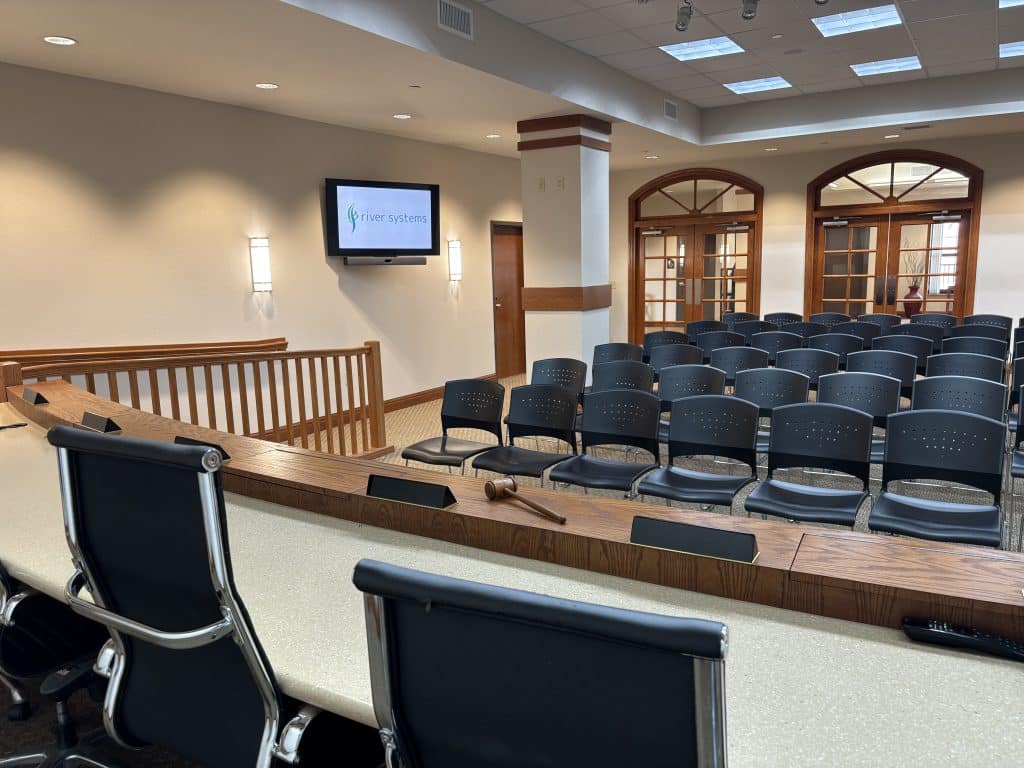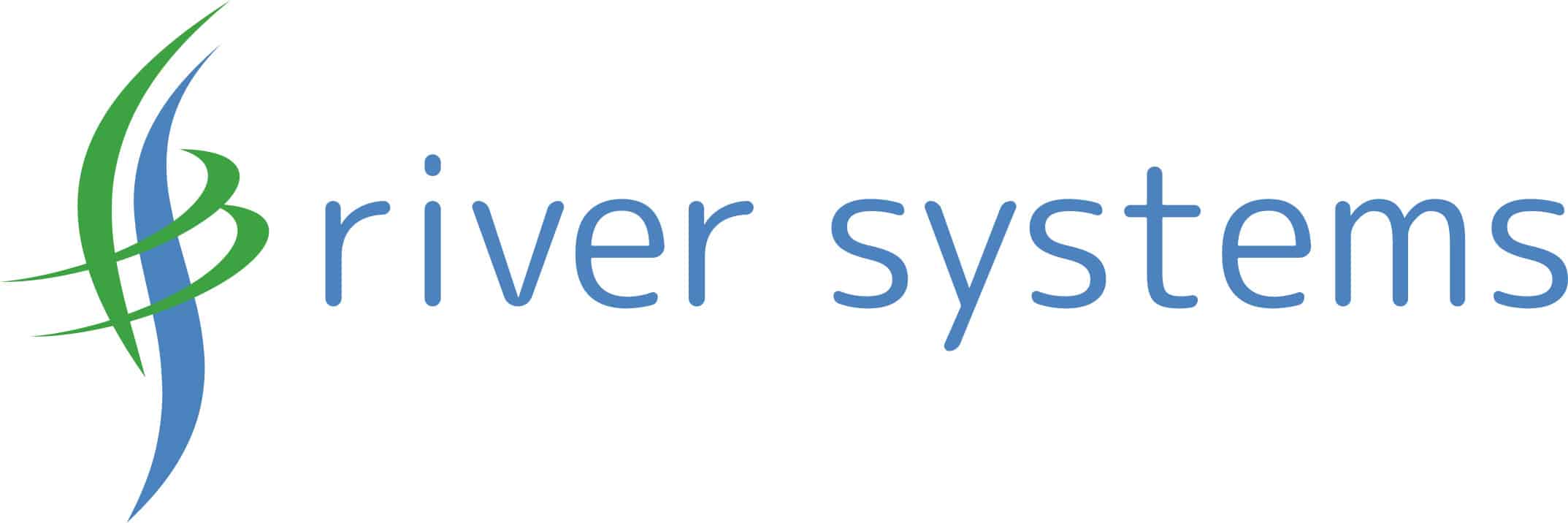California Transparency Laws & Video Technology in Public Meetings

Practical Guidance for State Agencies and Counties
California’s dedication to open government is reflected in two foundational statutes: the Brown Act and the Bagley-Keene Open Meeting Act. These laws require that public meetings—whether held by local councils or state agencies—remain accessible, documented, and open to public participation. With the evolution of digital platforms and video technologies, public entities now have robust tools to meet these legal mandates while expanding civic engagement and operational transparency.
At River Systems, we believe you can meet these legislative requirements effectively—and even improve community engagement in the process—by keeping your technology simple, easy, and reliable. This document offers an in-depth look at the bill, explains common challenges, and outlines how our solutions can help you satisfy the law’s mandates without burdening your team or finances.

Legal Foundations
The Brown Act governs local agencies such as city councils, county boards, and school districts. It mandates that meetings be open and public, with agendas posted at least 72 hours in advance. Members of the public must be allowed to attend, observe, and comment on agenda items. While teleconferencing and streaming are permitted, agencies must ensure that remote participants have equal access to the proceedings.
The Bagley-Keene Open Meeting Act applies to state-level bodies, including boards, commissions, and multi-member agencies. It requires that meeting notices and agendas be made available at least 10 days prior to the meeting. The law also mandates public access to meeting records, votes, and deliberations. Teleconference meetings are allowed under this act, provided that public participation is preserved and facilitated.
Streaming & Recording: What’s Allowed
Under the California Legislature Transparency Act, the public has a constitutional right to record public meetings using audio or video equipment. These recordings may be broadcast or transmitted, as long as they do not disrupt the meeting. While agencies may adopt reasonable policies regarding equipment placement and use, they cannot prohibit the recording of open sessions. This ensures that constituents can document and share public proceedings freely.

Compliance Through Technology
Modern video technologies offer agencies practical solutions for meeting transparency requirements. Live streaming provides real-time access for remote constituents, but agencies must ensure stable connections and options for public comment. On-demand video archives fulfill recordkeeping obligations and enhance transparency, especially when they are ADA-compliant and searchable. Hybrid meeting platforms support both in-person and virtual attendance, and must adhere to teleconference rules outlined in the Brown Act. Automated transcription tools further improve accessibility and documentation, making it easier to generate accurate meeting minutes and public records.
Implementation Tips
Deploying video technology to support transparency mandates is easier and more affordable than ever. Today’s solutions are designed with simplicity in mind, allowing agencies to get up and running quickly—often without the need for specialized technical staff. Many systems offer plug-and-play installation, intuitive interfaces, and seamless integration with popular streaming platforms like YouTube, Facebook Live, and municipal websites.
Automated cameras can be programmed to follow speakers based on audio cues, eliminating the need for manual operation during meetings. These smart systems use voice tracking and preset zones to ensure that the active speaker is always in frame, creating a professional and engaging viewing experience. Combined with built-in microphones and audio processing, agencies can deliver clear, consistent sound without complex mixing boards or AV technicians.
Affordable packages now bundle video capture, audio tracking, and cloud-based archiving into a single platform. These solutions often include features like closed captioning, multi-language support, and automatic transcription—making compliance with accessibility standards straightforward. Recordings can be indexed and stored in public repositories with minimal effort, ensuring constituents can easily find and review past meetings.
In short, agencies no longer need to choose between transparency and technical complexity. With today’s tools, delivering open, accessible public meetings is not just possible—it’s practical, scalable, and budget-friendly.
Step-by-Step Compliance Plan
Follow these steps to comply with the California Legislature Transparency Act effectively, without overextending your budget or staff resources.
1. Evaluate Your Existing Setup
Room Survey: List the spaces where you hold public meetings and note each room’s size and layout.
2. Contact River Systems
Consultation: Reach out to discuss your unique circumstances and we can help you select the essential hardware for each room, ensuring you never buy needless equipment.
Budget Considerations: We work within your cost parameters. Since we are on the QPA, you can avoid convoluted bidding processes or unplanned price increases.
3. Customize Your Equipment Package
Cameras: We propose camera solutions that provide wide coverage or pan-tilt-zoom features, depending on the space.
Audio: If you hold meetings in larger rooms, a mix of table and wireless mics and ceiling speakers might be best. In smaller chambers, a integrated microphones or ceiling microphones with built-in speakers may suffice.
Control Interface: Our simplified interface allows you to start or stop streaming with minimal clicks. If needed, we can include advanced controls for volume adjustments or multi-camera switching.
4. Installation and Testing
On-Site Setup: Our team installs cameras, monitors, microphones, and verify network configurations. We position cameras and microphones to reduce glare, echo, or background noise.
Live Test Run: We simulate a meeting to confirm that audio, video, and any integrated slides or screen shares function properly. We also confirm that the platform meets the public’s ease-of-access expectations.
5. Staff Training
Basic Orientation: Typically, a short session demonstrates how to begin broadcasting, attach agendas, and archive recordings. We highlight steps for normal operations, such as pressing a single button to initiate the live stream.
Advanced Features (If Needed): For agencies interested in multi-camera setups or custom overlays (e.g., lower-thirds with speaker names), we offer additional guidance. However, we only recommend these upgrades if they serve a practical purpose.
6. Going Live and Archiving
Live Events: Start your broadcast via the interface. The system is designed to be hand-free so you can focus on the agenda, not the technology.
Archiving: After the session, our solution automatically stores the video. Agendas, minutes, or memoranda attach seamlessly, so viewers understand the context and access related materials.
7. Long-Term Maintenance and Support
Scaling Up: We provide growth options, so if you need to equip more rooms or add advanced features, we can build on the existing setup without replacing everything.
Ongoing Assistance: We provide live help desk support, parts replacement for failed components, and software updates to keep the system current and functioning.
Frequently Asked Questions:
Q: Are common platforms like YouTube or Facebook permitted?
A: Yes, we often embed these streams on an official municipal website, so residents can find everything in one place.
Q: How do we link agendas and memoranda to the archived video?
A: Our systems automatically attach or embed these documents. Once the meeting ends, viewers can open the archived recording and immediately see relevant files, helping them follow the discussion without searching multiple pages.
Q: Does the equipment arrive preconfigured?
A: Our hardware arrives ready to install, and we provide on-site or remote guidance during setup. After a brief test, your team should be ready to live-stream or record confidently.
Q: We already have cameras and audio gear. Can we use it?
A: Often, yes. We integrate existing devices if they meet the necessary quality standards (e.g., high-resolution video, clear audio). There is no need to purchase entirely new systems if your current setup can work with minimal adjustments.
Q: Will we need specialized IT staff to manage day-to-day operations?
A: No. We emphasize intuitive controls so that clerks, administrative assistants, or elected officials can run the system. If advanced features are desired—like switching multiple cameras—we provide extra training.
Why It Matters
Streaming and recording public meetings are more than technical upgrades—they are expressions of civic responsibility. By adopting video technologies, agencies demonstrate a commitment to transparency, build public trust, and expand access to underserved communities. These tools also create permanent records that support accountability and serve as valuable historical references.
Moving Forward
Review Your Meeting Spaces: Identify where you hold public meetings, note internet speeds, and assess any existing AV gear.
Contact River Systems: Let us know your specific needs. We will propose an appropriate package—focusing on essential components for cost-effectiveness.
Implement Gradually if Needed: Some agencies upgrade their largest chamber first, then roll out similar configurations to smaller rooms once they see how well the system works.
Stay Flexible: If legislative changes arise or your city’s needs grow, we can help expand your setup without forcing you to buy all-new equipment.
Ready to Talk Compliance?
River Systems stands ready to guide your agency or county through each phase of the design process. Whether you have questions about bandwidth requirements, integrating existing hardware, or ensuring secure archiving, our team will help you choose the most efficient path forward.
Email: ContactUs@riversys.us
At River Systems, we believe government transparency should be easy to achieve—no complex setups or steep learning curves. By focusing on user-friendly designs and proven hardware, we empower you to meet Ohio’s requirements while improving how you connect with your community.
